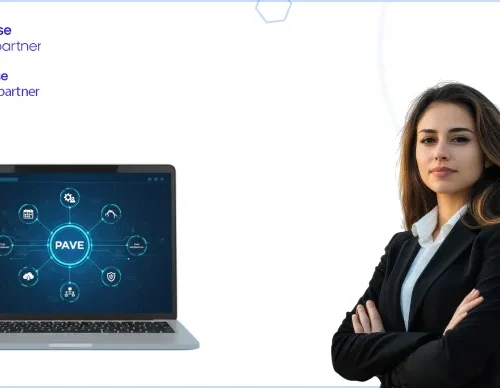For freight forwarders operating in New Zealand, compliance is not optional, it’s essential.
Customs authorities demand precision in every declaration, and one of the most important pieces of that process is entering invoice lines correctly. In contrast, it might feel like just another data-entry task, but getting invoice lines wrong can lead to rejected declarations, costly delays, and dissatisfied clients.
CargoWise simplifies this process by letting you manage invoice headers and invoice lines within the same declaration. But knowing how to enter the right information, validate balances, and configure customs-specific details is what separates a smooth clearance from a frustrating one.
This guide explains how invoice lines work in CargoWise, why they matter for New Zealand customs compliance, and how to make the process more efficient in your operations.
What Role do Invoice Lines Play in a Declaration?
Invoice lines break down a shipment into its individual products. Where the invoice header captures the big picture, invoice lines provide the detail that customs authorities need to assess duties, taxes, and compliance.
Without accurate invoice lines:
- Duty and tax calculations may be incorrect.
- Customs authorities may reject the declaration.
- Shipments could be delayed until errors are fixed.
For forwarders, the accuracy of invoice lines is not just about compliance. It directly affects customer satisfaction, as clients expect their goods to move without unnecessary delays.
Where do You Begin When Entering Invoice Lines?
The process starts with an existing Customs Declaration in CargoWise, one that already has invoice headers recorded. This foundation is important because invoice lines must tie back to a valid invoice.
To enter invoice lines:
- Open the declaration and select the Invoice Lines tab.
- In the first grid line, click on the Invoice field. CargoWise will display the first invoice from the headers.
- If multiple invoices exist, choose the correct one from the drop-down menu.
This ensures the system links the invoice lines directly to the right header, maintaining consistency across financial and customs data.
Which Codes Can Be Used to Classify Goods?
Classification is one of the most critical steps in creating accurate invoice lines. In CargoWise, you have several options to classify goods:
- Product code (set up in your system registry).
- Lookup code.
- Tariff code, linked to the HS classification system.
- Concession code, if the goods qualify for special treatments.
Once a code is entered, CargoWise automatically populates the goods description and other stored data from the product record. This reduces manual entry, minimizes errors, and helps maintain consistency across all declarations.
What Details Should Be Entered for Each Invoice Line?
Each invoice line needs to capture the commercial and customs details specific to that product. At a minimum, you should enter:
- Invoice quantity and the unit of measure.
- Price per unit.
- Country of origin (editable if it differs from the header).
- Preferential duty details, if applicable.
Depending on customs requirements, you may also need to record specific customs quantity types and values. Getting these details right ensures that duties and taxes are calculated accurately and that declarations comply with customs regulations.
When do Preferential Duty Rates Apply?
New Zealand has trade agreements that allow certain goods to qualify for reduced or zero duty rates. CargoWise makes it possible to record this at the invoice line level.
You can specify preferential treatment by:
- Selecting “Yes” in the preferential drop-down menu.
- Choosing the relevant trade group.
- Configuring defaults in the system registry to populate this automatically.
Capturing preferential duty rates is not only about compliance, it can save customers significant costs. Missing this detail could result in overpayment of duties and an unhappy consignee.
How do You Manage Customs-Specific Requirements?
Some products require more than just quantity and price. Customs-specific details, such as permits, prohibited codes, or levy information, must also be linked to the right invoice lines.
CargoWise allows you to:
- Enter permits where required.
- Record duties and levies specific to the product.
- Add packing details directly to the line.
By handling these requirements at the line level, you reduce the risk of exceptions or rejection by customs.
What Happens if Invoice Lines Don’t Balance?
One of the most important milestones in CargoWise is ensuring that the invoice lines balance against the invoice header.
- The Current Invoice section displays the remaining balance.
- If the balance is not zero, CargoWise displays a warning.
- Only once the balance is zero can the declaration be finalized.
This balance check is more than a technical step. It is a compliance safeguard that ensures all invoice values are accounted for before the declaration is submitted.
Why do Forwarders Struggle With Invoice Lines?
Despite the system’s structure, many forwarders face common challenges:
- Incomplete product records that don’t auto-populate.
- Manual errors in quantity, price, or preferential fields.
- Complications from multiple invoices in one declaration.
- Missing permits or customs codes at the line level.
The result is wasted time reconciling balances, dealing with customs rejections, and managing client frustrations.
How Can You Streamline Invoice Line Entry in CargoWise?
There are several ways to make invoice line entry faster and more accurate:
- Build strong product records with tariff codes, duty details, and descriptions.
- Use system registry defaults to auto-populate repetitive data.
- Automate exception alerts to notify teams when invoices don’t balance.
- Train staff on customs-specific requirements so they know what to check at lthe ine level.
With the right configuration and processes, invoice line entry becomes less about firefighting and more about maintaining compliance with confidence.
When Should You Consider Expert Help?
If invoice lines are a recurring pain point in your operations, it may be time to bring in a certified CargoWise service partner. An expert can:
- Configure defaults to reduce manual input.
- Set up templates for multi-invoice declarations.
- Train your team on handling permits, duty rates, and balancing.
- Ensure your CargoWise setup aligns with New Zealand customs requirements.
Professional support helps transform invoice line entry from a source of errors into a streamlined compliance process.
Conclusion
Invoice lines may feel like small details in a much larger process, but in customs compliance, they are a critical milestone. Entering them correctly ensures accurate duties, prevents delays, and builds trust with your clients. Entering them poorly creates avoidable problems that slow down your operations.
At Elicit Technology, we work with CargoWise users across New Zealand and beyond to configure customs workflows, train staff, and reduce compliance risks.
If you want to simplify your invoice line process and keep your declarations compliant, our certified CargoWise consultants can help. Schedule a demo today to learn how we can support your team in making CargoWise work smarter for your business.






